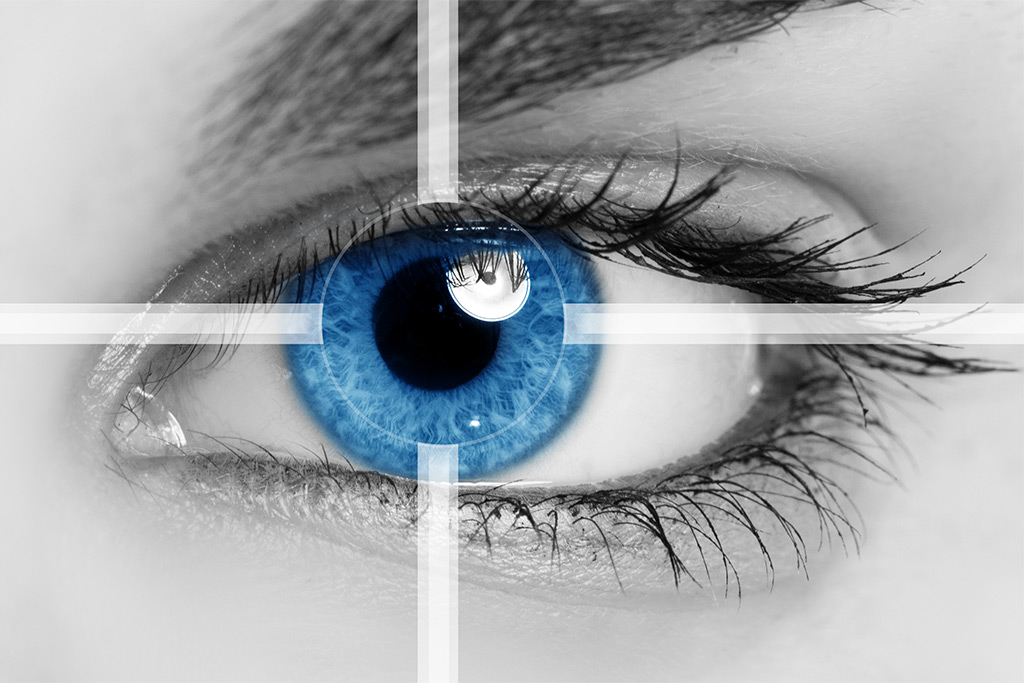This research field is aimed to investigate how the basic mechanisms of visual attention work. Specifically, we are interested in understanding the mechanisms subtended in the deployment of attention in space and time, and how these two subsets of cognitive functions interact. Most of these investigations are conducted by using EEG/ERP techniques in adults and are focused on the N2pc, a hallmark of spatial attention deployment, and on other ERPs such as the P3 complex. There are several people in the world collaborating with us in this research field. Just to mention some: Pierre Jolicœur at the University of Montreal (Canada), Paul Dux at the University of Queensland (Australia), Xingshan Li at the Chinese Academy of Sciences (China), Brad Wyble at the Pennsylvania State University (U.S.A).
Recently, we have also started to investigate visuo-spatial attention in infants (5-7 month-old), by using both functional near-infrared spectroscopy (fNIRS) and high-density EEG. In particular, we are interested in delineating a developmental trajectory, from early infancy to adulthood, of the brain structures underpinning the allocation of covert attention to eccentric visual objects. During the encoding of visual scenes, covert attention (as well as overt attention) is related to the activation of a complex network of cortical (and subcortical) areas, working in an integrated manner. From an evolutionary point of view, it is assumed that the changes related to brain structures’ maturation after birth are closely related to the changes that children show in response to visual stimuli.
The research in this area is focused on understanding the mechanisms of visual short-term memory in the adult brain. Short-term memory is the ability to retain for a few seconds information useful to perform a wide range of cognitive tasks. In particular, we are interested in investigating the neural networks involved in visual short-term memory and the relation between visual attention and visual short-term memory. The techniques used to study these aspects are EEG/ERP and functional magnetic resonance imaging (fMRI). There are several people collaborating with us in this research field, among whom Pierre Jolicœur at the University of Montreal (Canada).
The research in this area is aimed to uncover how our attention mechanisms are modulated either by symbolic and biological stimuli, both in healthy and in clinical individuals. We also investigate the impact of higher order cognitive mechanisms on eye movements and eye-related responses. Our methodologies include reaction times, self-report measures and eye tracking, applied in laboratory and in real-world contexts.
Language production is one of the most astonishing abilities that humans possess. During daily communications, speakers retrieve the appropriate words from the pool of 30.000 words that it has been estimated an adult knows and utter them in a specific order according to the syntactic rules of the language. Despite this complexity, speakers are very efficient and in normal rate conversations produce 150 words per minute and make no more than two errors every 1.000 words. How do speakers access the appropriate words during their conversations in such a quick and error-free fashion? How a specific pattern of sounds can be retrieved parting from the intention to communicate a thought? We use two principal methods (behavioral and electroencephalography) and different populations (monolingual and bilingual speakers; signers and oral speakers; adults and children) to answer these questions.
Aim of this line of research is to study sign language and deaf and hearing people that use it. From a psycholinguistic perspective, sign language offers a unique opportunity to investigate which are the universal features of the language system and which are the specific aspects related to the manner in which language is perceived, (i.e. through vision or audition) or produced (i.e. with movements of the hands or the mouth). Can cognitive and neural models of oral languages be applied to sign languages? How are signs produced and recognized? What is the impact of iconicity (i.e. similarity between the sign and the corresponding meaning) in language production and comprehension? Which are the consequences of the use of sign language with respect to oral languages? We try to answer these questions through behavioral and neural investigations in which we compare the performance of hearing speakers and deaf signers.
Bilingualism and dialects
(PI: Prof. Francesca Peressotti; Collaborators: Dr. Eduardo Navarrete)
Bilingualism offers another extraordinary opportunity to investigate the nature of the language system and, more generally, of the cognitive system. We exploit the linguistic richness and variety of Italian dialects to study the mind and the brain of bilinguals. The participants of our experiments are fluent speakers of one Italian dialect. We are interested in understanding whether the consequences of bilingualism on the language system – as well as on other aspects of cognition (i.e. on attention, cognitive control, decision making) – also apply to dialects.


Bilingualism and sign language
(PI: Prof. Francesca Peressotti; Collaborators: Dr. Eduardo Navarrete)

Generally, studies in bilingualism consider people that speak two or more oral languages (unimodal bilinguals). There is, however, a special group of bilinguals that can speak an oral and a signed language, the bimodal-bilinguals. Differently from unimodal bilinguals, bimodal bilinguals use two different sensory channels to understand and produce the two languages they know. How the brain shapes in order to understand and produce a signed language? Which are the differences between the brain structures of these two groups of bilinguals? We used both behavioral and neuroimaging techniques in order to investigate these issues.
The research in this area is focused on understanding the neural substrates of numerical cognition. In particular, we are interested in investigating the neural networks involved in subitizing and estimation. In visual enumeration tasks, participants are required to determine the numerosity of a set of items; in this domain, one intriguing phenomenon is the rapid, precise and confident judgment of the numerosity of small sets, known as subitizing (Kaufman, Lord, Reese, & Volkmann, 1949). Subitizing can be usually observed only up to four items (Trick & Pylyshyn, 1994): enumeration within this range is apparently effortless and item numerosity has a close-to-nil effect on reaction times (RTs) and errors. When such limit is exceeded and serial counting is precluded, OTS gives way to another pre-verbal system that supports numerosity estimation, the Approximate Number System (ANS) (Feigenson, Dehaene, & Spelke, 2004; Piazza, 2010; Stoianov & Zorzi, 2012). ANS computes an approximate representation of numerosity with a characteristic variability signature that obeys Weber’s law. Neuroimaging data suggests that the core region of numerical processing is located in the intraparietal sulcus.
Face processing & Consciousness
Collaborators from the CoLab: Dr. Antonio Maffei, Thomas Quettier, Filippo Gambarota, Dr. Arianna Schiano Lomoriello
International Collaborators: Prof. Pier Francesco Ferrari, Prof. Naotsugu Tsuchiya, Prof. Roy Luria
In this research area, we conduct several lines of studies through EEG and behavioral techniques: 1) we are concerned with studying how the sensorimotor system contributes to the processing of facial expressions of emotions, both in healthy subjects and in subjects with facial paralysis; 2) one line of studies is dedicated to studying the neural basis of the conscious processing of faces with facial expressions of emotions; 3) furthermore, through graph theory, we investigate the characteristics of the brain networks involved in the processing of faces.
Testing the uniqueness of the embodied pathway in facial expression processing (Project Funded by Fondazione CARIPARO, Ricerca Scientifica d’Eccellenza 2021)
Lively debated theoretical models posit that emotional face processing is attributable to an internal simulation mechanism engaging motor/somatosensory brain regions (embodied route). Contrasting solid evidence – particularly from studies in patients with congenital facial paralysis – challenges the need of simulation for emotional face processing, deeming as sufficient the coupling between visual and conceptual/linguistic systems (disembodied route). Key guiding concepts of the project are those of degeneracy and neuroplasticity, and, in light of these, we hypothesize that the embodied and disembodied routes coexist and are dissociable by virtue of some degree of specialization supported by recently revised models of face processing. The main objective of the project is to reveal the conditions that preferentially trigger the embodied route, thus highlighting the unique role it might have in the complex human functional architecture. We hypothesize that the embodied route is tuned in promptly characterizing specific instances of facial expressions and is particularly resistant to conditions of absent/reduced awareness, thus guaranteeing a crucial source of adaptability to the environment by means of degeneracy.
For this project, we will recruit both healthy participants and participants with congenital (Moebius Syndrome) and temporarily acquired (Bell’s palsy) facial paralysis.








